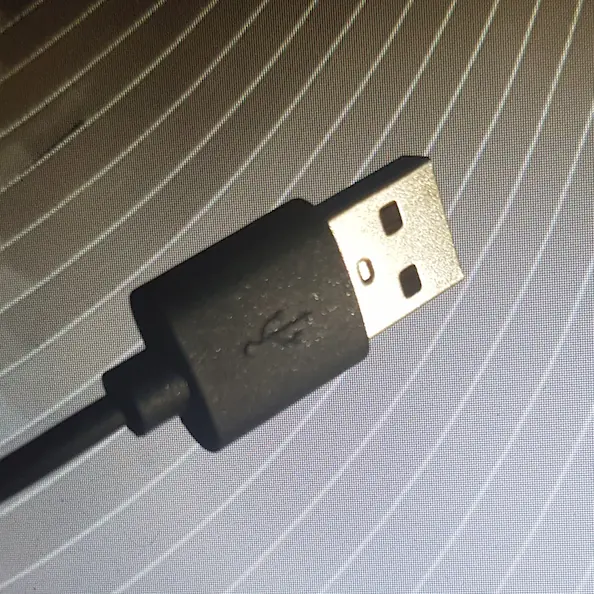This article looks at USB ports and plugs, how they became such everyday items and why we still use them around the home and in vanlife and campervans.
If you’re looking for a particular section, feel free to skip ahead using the contents list above.
History of the USB
The Universal Serial Bus, or USB, was created to connect personal computers to peripheral devices such as mice and printers.
USB connectivity made it possible to plug and play new devices instead of the lengthy set-up required when connecting with a serial or parallel port.
In addition to making communication easier, it also carried a current making it possible to power peripheral devices without the need for an additional power source such as batteries.
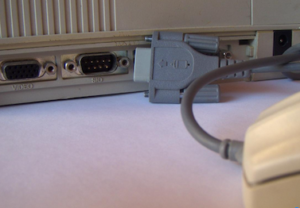
Types of USB – a timeline
1996 USB 1.x was created with a data transfer speed of 1.5Mbit/s (note the speed is megabits per second, not megabytes which are 8 times larger (8 Mbit = 1MB)
2000 USB 2.0 with a speed of 480Mbit/s
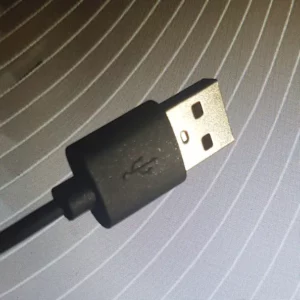
2008 USB 3.0 with a transfer speed of up to 5 Gbit/s, ten times faster than 2.0. USB 3.0 ports and plugs were more often than not color coded in blue to distinguish them from their slower 2.0 predecessors.
2013 USB 3.1 was released (gen 1) with a data transfer speed of 10 Gbit/s over both type A (the familiar oblong USB plugs) and type C (the new oval, smaller plugs)
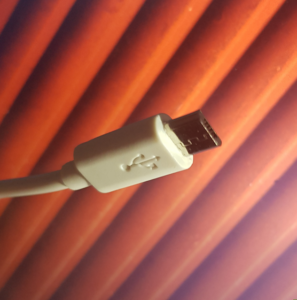
2017 USB 3.2 was released with up to 20 Gbit/s over type c connectors.
2019 USB 4.0 with 40Gbit/s data transfer on the Thunderbolt 3 protocol, a hardware interface developed by Intel and using only type c connectors.
Vanlife and USB
In a modern vehicle, factory-fitted USB outlets are usually connected to the vehicle’s main starter battery.
In a campervan, these USB outlets are usually connected to a leisure or house battery.
These terms refer to a separate deep cycle battery which exists purely to power daily life in the living area of the van.
Leisure battery is a term widely used in the UK whereas house battery is widely used to describe this type of battery elsewhere in the world.
A growing alternative, especially in self built campervans and micro campers, is a separate, mobile battery pack with not only USB outlets but also 110v/240v 6plug sockets and often wireless charging for your phone all in one convenient portable pack.
In order to have these packs and batteries last as long as possible, reducing the voltage use of your electrical items is key.
Moving from using 110v (or 240v depending on where you are in the world) to 12v is the first step as this reduces any power loss from converting the 12v into a higher voltage with an inverter.
The next way to reduce power is to use USB items and appliances.
All USB ports and devices use only 5v and they have their own ‘step down’ transformer so when you plug them in everything is converted down to 5v.
USB socket options
Temporary Adaptors
If your vehicle doesn’t have any USB sockets already installed, you can use a USB adaptor in the accessory socket.
Accessory sockets, or as they were previously known, cigarette lighter sockets, carry 12v from the vehicle’s main starter battery.
These adaptors slot into the 12v socket and step down the 12 volts to 5 volts and into a USB socket. You can then use any USB cable to connect your device.
A cigarette lighter draws roughly 10 amps, and cigarette lighter circuits usually have 10 or 15 amp fuses. This enables you to plug in phone chargers and other devices that draw less than 10 or 15 amps, depending on the fuse in your specific vehicle.
Most devices will specify their wattage on the box or leaflet it came with so you just use the calculation of Amps x Volts = Watts.
So a 10amp accessory socket x 5v = 50watt maximum before the fuse will blow.
That said, most adaptors will specify the maximum.
Permanent Sockets
Most campervan owners are familiar with having a second battery to power everything in the back of the van in order to not drain the vehicle’s starter battery.
USB sockets can then be wired to this 2nd battery through a fuse to provide a permanent USB charging solution.
This second battery is then wired to the main battery and is charged either through a split charger or DC to DC charger which both sends the excess charge from the alternator to the second battery once the main car battery is full.
Power pack sockets
Most portable power packs (or solar generators as they’re sometimes referred to) come with one or several USB ports.
These packs are mini versions of a larger campervan installation, comprising of a small battery, an inverter, some USB scots, fuses and a charging device so that you can recharge them from your accessory socket whilst driving, or plug in a solar panel to charge whilst stationary.
The most well-known of these is the Jackery (Click here for the latest pricing at Amazon)
Although more expensive than a DIY set-up, the Jackery benefits from being able to take it between different vehicles, comes with a warranty and is made to a high standard leaving you with peace of mind that you may not get if you’ve had to learn how to install all the components into your van instead.
Home and USB
Having USB ports in your wall sockets can enable your devices to charge up to 40% faster than plugging them into a USB port on your laptop.
These outlets also use less electricity, not only because of the faster charging times but also because they use no standby power. Once your device is full, it draws no further power.
USB ports and amps
A laptop USB port, like all USB ports, supplies 5v, at a maximum* current of 0.5 amps creating an overall output of 2.5watts.
USB 3.0 ports supply 5v and 0.9amps and because of the higher amps, your device will charge faster.
The ports on laptops are called downstream ports whereas dedicated ports, such as those incorporated into a household socket, or on a powerpack or in a campervan, can provide a higher amperage making charging faster.
Example power usages
Types of leisure battery.
If you’re in a campervan or using a portable pack, you might wonder how long they might last on a trip, and how many things you can run from them before they drain the battery entirely.
The first thing you need to know is your battery type and size.
If you have a lead acid or AGM battery, the usable capacity is only half the stated capacity.
For example, if you have a 130aH AGM battery, then you can use half of this, 65aH before you need to recharge it.
Running a lead acid or AGM battery past 50% empty damages the battery and shortens its lifespan.
If you’re using lithium batteries (LiPo4) then you can use the full capacity of the battery.
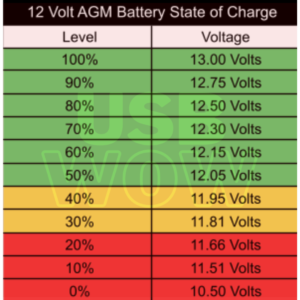
USB Devices and power draw
A 1000mAh battery will last for one hour when discharging at 1000mA, for 1000 hours when discharging at 1mA, or for 10 hours when discharging at 100mA.
Complicated right?
Let’s look at an example.
I have a small rechargeable night light in the van.
The night light has a 1000maH battery, the equivalent of 1aH (every 100 milliampere hours equals 1 amp hour).
So to recharge it fully takes 1aH from my battery bank.
Watt-hours = Amp-hours × Volts
So 1 amp hour x 5v = 5 watt hours
My light is 0.5 watts, so 5 watt hours divided by 0.5 equals 10
So the battery will last 10 hours of continuous use.
The voltage is always 5 volts with a USB item so we just need to know the power output in watts and the size of the internal battery.
Then we can work out how much of our battery bank it’ll use in a full charge, and also how long we can run it.
Let’s look at another example.
I have this dog nail trimmer and grinder which is USB rechargeable.
The motor is 5 volts
The battery is 1500maH
The wattage is 7.5
So 1.5 amp hour x 5v = 7.5 watt hours
My grinder is 4 watts, so 7.5 watt hours divided by 4 equals 1.8756
So the battery will last just under 2 hours of continuous usage.
We hope that helps you decide to make a switch to USB and hope you enjoy our personal reviews of gadgets and items we have bought and used ourselves, including this mobile WiFi router which gives us unlimited internet when travelling.
FAQ
What’s the most common type of USB connector?
USB A is the most common and found on the end of nearly every USB cable however, USB C is quickly catching up due to the fact it can handle higher speeds and higher voltages.
Why can’t I charge my laptop via USB?
Unfortunately a standard USB A cable and plug doesn’t carry enough power to charge some items, including a laptop. USB C (the smaller newer USB connector type) does carry enough power and some laptop manufacturers have enabled USB-C charging capability.
Why does my USB plug get hot?
Whilst it’s normal for a wall charger to become warm whilst charging your device, it’s less normal for the cable or plug to become hot. Cables generally heat up when the load exceeds the rating of the cable and would indicate a problem with the cable or charger itself. Time to buy a replacement.
Looking for a fix? Check out the most common USB problems (with solutions)
AFFILIATE DISCLAIMER
The USBWOW website is supported by our visitors. Some of the product links on this website are through affiliate schemes such as Amazon. This means that I earn a small commission if you choose to purchase something at no extra cost to yourself.

